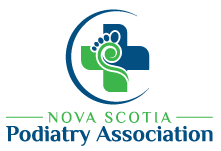Podiatrists are specifically trained in the assessment, diagnosis and treatment of common foot problems. When you have a foot related problem, see a podiatrist.
Bunions
A bunion, also known as ‘hallux valgus’ is a deformity where the big toe excessively angles towards the second toe and leads to a bony lump on the side of the foot. This can also form a large sac of fluid, known as a bursa, which can then become inflamed and sore.
Flatfoot (Fallen Arches)
This is a loss of normal inner arch also called pes planus. This can occur at birth or develop during life. Flatfeet do not need treatment unless there are symptoms, like foot pain or ankle, knee lower back or difficult awkward gait – may arise as a consequence of hyper-pronation or from increased eversion of the subtalar joint.
Heel Pain/Fasciitis
Heel pain is a common occurrence and has many causes but in most cases the pain is from some form of low grade repetitive stress injury. Often from a poorly functioning foot. When pain does develop, it can be very disabling, making every step a problem then resulting in other sites of pain as we try to compensate. The more common causes include: Heel spurs (plantar fasciitis) Heel bursitis (inflamed sacs of fluid) Heel bumps.
Onychomycosis (nail fungus)
Toenail fungus is an infection of the nail and sometimes surrounding tissue. It is extremely common with 75 percent of people over 60 years old having the infection. Frequently the problem causes cosmetic concerns, but many patients also experience pain. The affected nails can become thick discoloured and brittle . Sometimes toenail fungus can allow more serious infections to develop.
Athlete's foot
Athlete’s foot is a common skin fungal infection. It can lead to intense itching, cracked, blistered or peeling areas of skin, redness and scaling anywhere on the feet.
Orthotics
Functional orthotics, sometimes called arch supports are designed to control abnormal foot motion. They can also be used to treat many foot problems including: heel pain, shin splints, tendinitis, flat feet and sporting problems.They are a prescription medical device made specifically for your foot following a complete biomechanical assessment and diagnosis.
Callus/Corns
Callus and corns ordinarily build up at areas of pressure and over boney prominences. They can also build up around areas of dry skin. Podiatrists are skilled in the reduction of these tissue buildups.
Toe deformities
There are a number of names of these conditions including hammer and clawed toes. These are contraction deformities. They can be caused by Arthritis, wearing ill-fitting shoes, muscular or biomechanical imbalances, and can be hereditary.
Warts
A wart is caused a viral infection. People will often look to get them treated if they multiple and/or become painful. They tend to be hard and flat with defined boundaries and often have one or more black pinpoints. They are more often seen in children, teenagers and people with immune suppression.
Diabetes
Diabetes affect the circulation,immune system and can affect nerves, known as Neuropathy. People with Neuropathy are less likely to feel a foot injury such as blesser, cut, or feel a foreign object in their foot. There is the potential for serious complications and Diabetic foot education, foot screening,and early treatment intervention is very important.
Poor Circulation/PAD
Vascular disease may present as persistent unusual feeling of coldness, numbness, tingling, swelling, burning or fatigue in the feet or legs. Other symptoms may include discoloured skin,dry skin,absence of hair on feet or legs, or cramping or tightness in the leg muscles.
Ingrown Nails
Can be caused poor nail cutting but can also be caused by trauma, pressure from ill-fitting shoes, biomechanical foot imbalances and can be hereditary. It is characterized by the nail digging into the surrounding skin, leading to infection, and possible infection of the toe.
© 2020 Nova Scotia Podiatry Association | All Rights Reserved | Site Disclaimer | Website by Windrose Web Design
